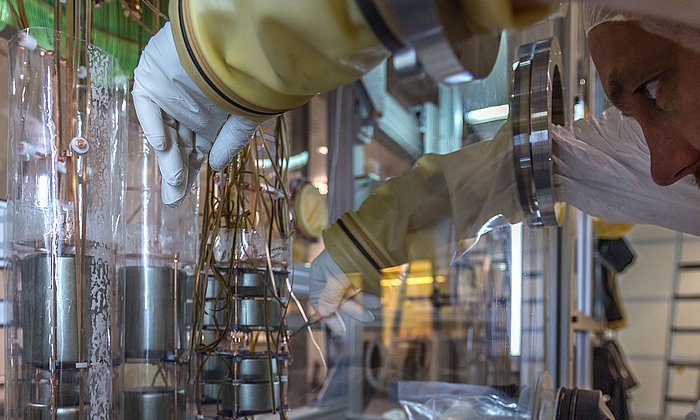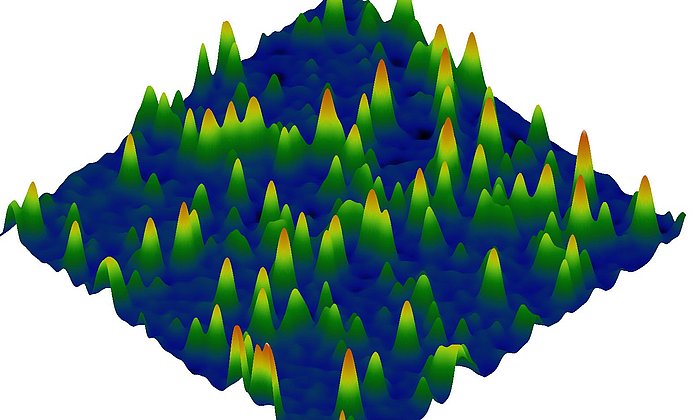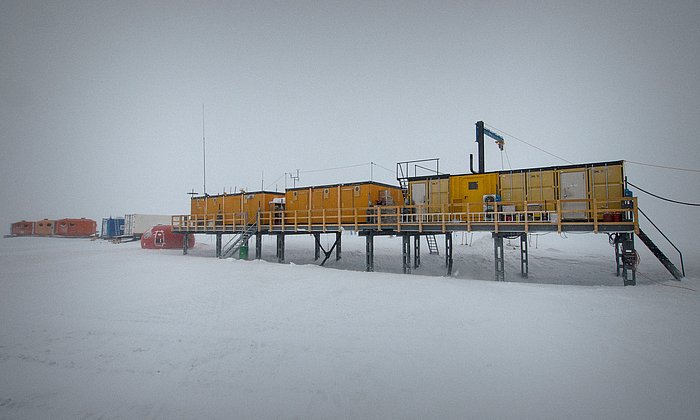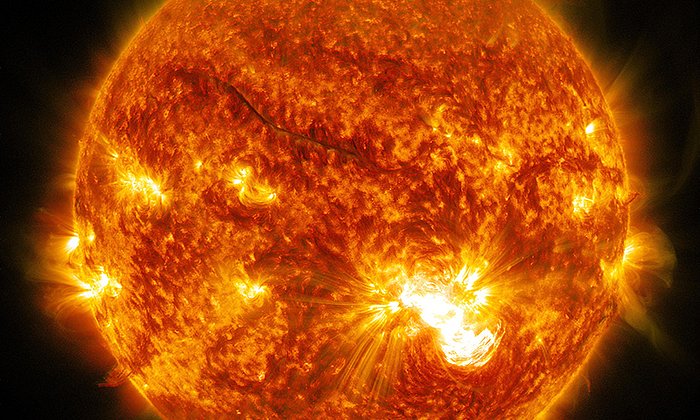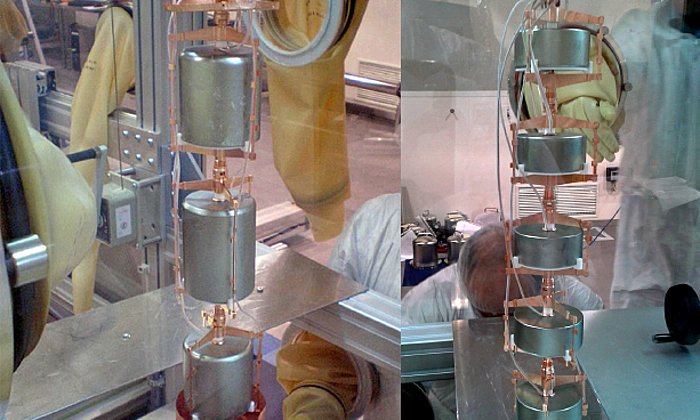First results from the KATRIN neutrino scale
More accurate than expected
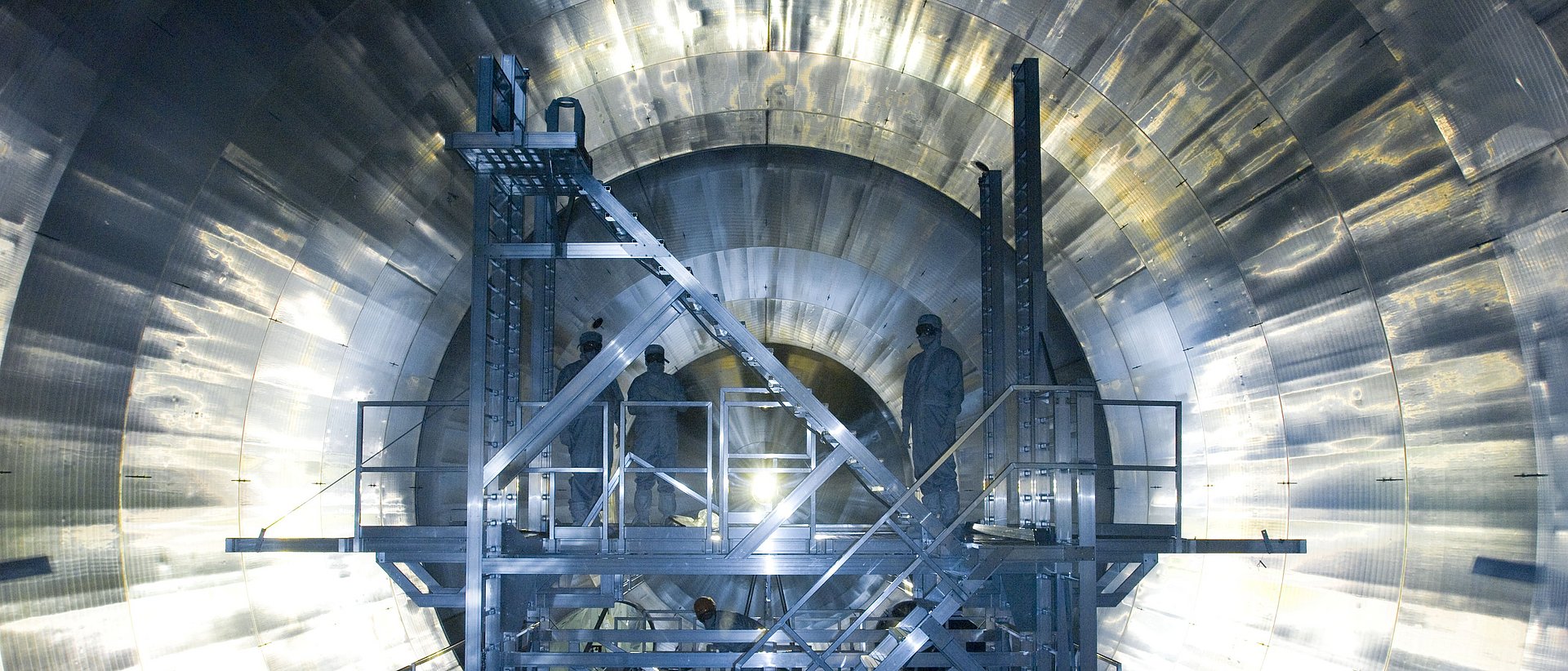
Apart from photons, the particles of light, neutrinos are the most common particles in the universe. The discovery of neutrino-oscillation two decades ago proved that – contrary to previous expectations – they have a mass, faint but other than zero.
The lightweight particles thus play a central role in the formation of large-scale structures in the cosmos. Also in the world of elementary particles, the smallest building blocks of the universe, their extremely small mass is of importance: it suggests new physics beyond common models.
Over the next few years, the international KATRIN experiment at the Karlsruhe Institute of Technology (KIT), will determine the mass of these fascinating neutrinos with unprecedented sensitivity. One of the research groups is headed by MaxPlanck@TUM-Tenure Track Professor Susanne Mertens.
In spring 2019, the 150-strong KATRIN team started their first neutrino measurements. The scientists circulated highly pure tritium gas for several weeks and recorded the first energy spectra of electrons from the tritium decay. The international team then set to work to derive the first neutrino mass from the data recorded.
Covert investigations lead the way
In order to obtain three really independent results, three international evaluation groups worked completely independently in parallel. Important additional information was hidden until the last analysis step. Only on the evening of 18 July 2019, all data were unlocked.
Thus, the programs that started simultaneously could compare the measurement data with the model expectation overnight and scan for the characteristic signature of the neutrino mass. All three groups reported identical results, which limited the neutrino mass to a value of less than one electron volt (eV). This means that KATRIN already has the world’s highest neutrino mass accuracy after an initial brief measurement phase.
Susanne Mertens, leader of the group at the Physics Department at the Technical University of Munich and the Max Planck Institute of Physics, coordinated one of the main analyses of the first neutrino mass data. The analysis strategy newly-developed by the TUM group was chosen as main result of this measurement campaign.
Besides the final data analysis her group contributed significantly to the characterization of the background and the calibration of tritium source. “I’m really proud of my team who did a fantastic job to realize this challenging data analysis.”
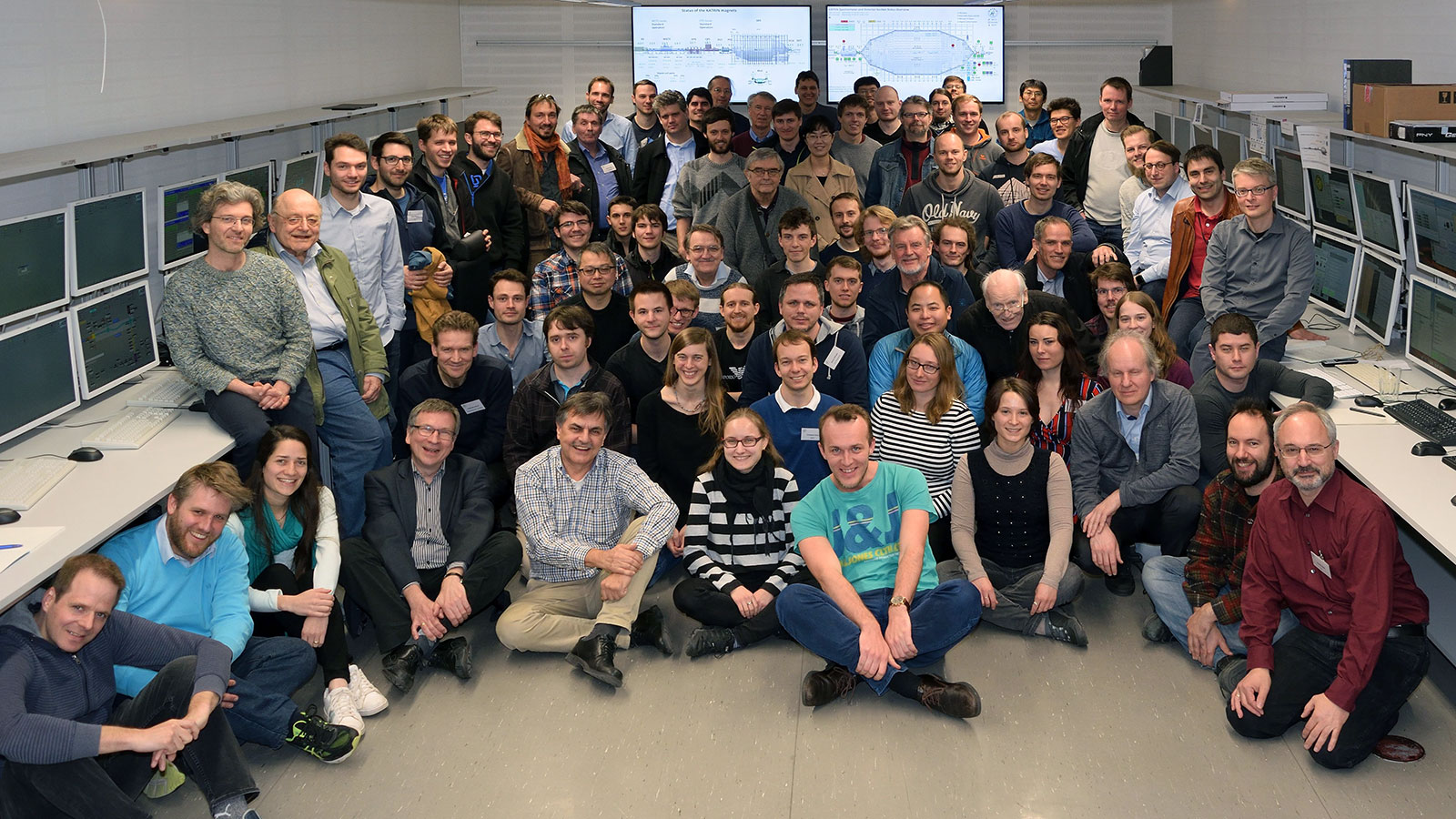
First operation of the KATRIN experiment with tritium
M. Aker, K. Altenmüller, M. Arenz et al. arXiv:1909.06069 [physics.ins-det]
An improved upper limit on the neutrino mass from a direct kinematic method by KATRIN
M. Aker, K. Altenmüller, M. Arenz et al. arXiv:1909.06048 [hep-ex]
In particle physics masses are specified not in kilograms, but in accordance with Einstein's equation: electron volts [eV] divided by the speed of light squared. Electron volts are a measure of energy. This convention is used to circumvent unfathomably small units of mass: 1 eV/c2 corresponds to kilograms.
The analyses now published use a long-established principle for the direct determination of the neutrino mass: During the radioactive decay of tritium, the resulting electron and an (electron) neutrino share the released energy of 18.6 kiloelectron volts. In extremely rare cases, the electron receives practically the entire energy. For the neutrino, only a tiny fraction of it remains but at least – according to Einstein – the amount E = mc2 of its rest mass.
Of the approximately 25 billion electrons released per second during tritium decay, the KATRIN scientists have investigated only a small sub-set: They filtered out around two million electrons with the appropriate energy spectrum in order to determine the neutrino mass.
KATRIN experimental setup
The KATRIN-Experiment at the MPI for Physics
Technical University of Munich
Corporate Communications Center
- Dr. Andreas Battenberg
- battenberg@zv.tum.de
- presse@tum.de
- Teamwebsite
Contacts to this article:
Prof. Dr. Susanne Mertens
Professorship for Dark Matter
Technical University of Munich and
Max Planck Institute for Physics
Föhringer Ring 6, 80805 Munich
susanne.mertens@tum.de
Tel.: +49 89 32354 590
